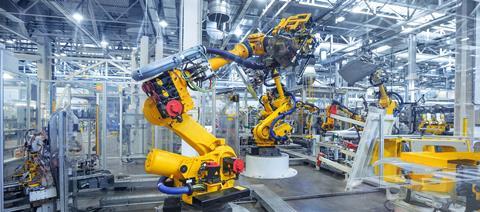The COVID-crisis has prompted a period of introspection as organisations question how to best structure their supply chains and manage their risk
Trends towards global sourcing, mobile warehousing, just-in-time production and lean manufacturing have created supply chains that are highly optimised, but also increasingly complex. When things are going well, this means cost-effective operations, less waste and companies can react flexibly and in an agile way to customer demands.
However, these trends also expose the supply chain to new, sometimes hard to recognise risks. And when there is interruption, the complexity of these supplier systems and the immediate nature of production can mean businesses are suddenly facing significant disruption with immediate impact to bottom lines, or even market share and reputation.
For instance, when governments imposed lockdowns to curb the spread of coronavirus, many firms found that manufacturing ground to a halt as the transportation of goods was interrupted. Where once a business was likely to have spares and back-ups in warehouses, just-in-time practices mean that many businesses are now left without access to the services or parts they need to operate.

Thomas Kocher, manager Research & Technical Development at Swiss Re Corporate Solutions commented: “The optimisation means that there’s often less slack in a supply chain. The consequence is, when you’re facing events such as the Covid-19 pandemic or sudden changes in economic landscape due to trade wars, the impact on your supply chain will be felt much more instantly.”
“The question becomes, whether to deal with a problem when it arises, or if a disruption could be so severe that it requires risk mitigation long before it materialises. While the resilience of today’s supply chains is very high under normal conditions, the impact of rare events can be very severe due to correlation - so you may suddenly be one of many companies facing the same problem and pursuing similar mitigation measures.”
Shifting sands
The uniquely volatile business environment of the past year has brought to the forefront of the business agenda the supply chain vulnerabilities they face. For some, this could signal a change in practices in the future to increase supply chain resilience - whether that’s looking at near shoring and onshoring, reintroducing back-up stock in warehouses or installing alternative production sites.
Kocher said: “What’s changing is how risk managers, management and insurers alike recognise and factor supply chain risk into their decision-making. With more and more severe supply chain interruptions materialising, businesses have started to reconsider certain aspects, such as having suppliers nearby to eliminate certain risk factors from their business activities.”
Swiss Re Corporate Solutions has seen examples of companies going back to insourcing, near-sourcing or onshoring critical IT infrastructure or manufacturing of critical intermediary products after realising the potential disruption to their complex, global supply chains.
“With so many recent big examples of interruptions that have occurred, people have said: ‘you know we didn’t really see that disruption coming’ or, ‘it showed us a huge vulnerability we weren’t aware of before’,” says Kocher. “It’s changing the way risks are assessed, and how decisions are made.”
The role of risk engineering
As organisations continue down the path of introspection and question how to best structure their supply chains and manage their risk, it becomes ever-more crucial that risk managers understand the full extent of the vulnerabilities in their own production process. Kocher believes that risk engineering plays an increasingly key role in this process.
“One of the key value drivers is to understand your supply chain and the assumptions you are making about it in case of disruption. This may sound trivial, but it is a fundamental condition to be in place before conducting impact assessment, quantification, deciding on the mitigation strategy and implementing mitigation measure. A structured approach to ensure adequate understanding in sufficient depth is critical. ”
Together with the risk engineer, the client assesses the potential impact of the exposures they face in a structured way, followed by a deliberate choice of a risk management strategy. This structured process supports risk managers, the C-suite and boards alike in taking effective decisions on how to manage their specific supply chain risks.
“Clients highly appreciate that outside, structured, risk-focused view, because they deal with a myriad of other business aspects every day, and risk is just one of many factors to consider,” says Kocher. “In this dialogue, it is vital to look beyond industry limits, and learn from other industries which may be more advanced in supply chain risk management.”
“Our engineers, with broad experience across all major industries, are able to make that transfer quickly and develop tailored solutions in an ongoing dialogue with the client. In our experience, this exchange is crucial to an effective solution.”
Empowering better decisions
Often, when a company considers key or critical suppliers, it is examining its supply chain with a financial lens, or with a strong focus on individual business sections. A realistic company-wide, impact-oriented view, underpinned with decades of actual loss experience, supports the identification of key exposures which may otherwise go unnoticed.
Kocher concludes: “There is no one perfect way of managing supply chain risk. The risk engineer brings to the table a wealth of experience of what the process could look like, and is able to pick up the individual client where they stand in their supply chain risk management journey, with the goal of bringing them further towards a comprehensive supply chain risk management adapted to their specific needs.”





No comments yet